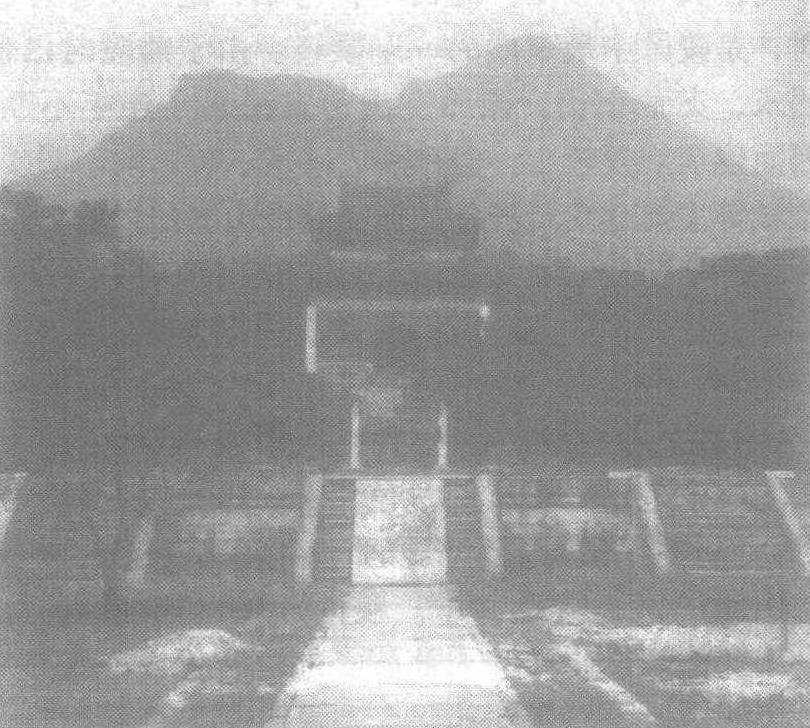明世宗永陵
世宗肃皇帝朱厚熜(1507—1566)的陵墓。朱厚熜,宪宗第四子朱祐杭的长子,因武宗无子,得以堂弟身份入继皇位。15岁即位,年号嘉靖。在位45年,初虽注意革除一些弊政,但在后期惑于长生之术,竟搬入西苑的万寿宫,终日斋醮,自封为 “太上大罗天仙紫极长生圣智昭灵统三元证应玉虚总掌五雷大真人玄都境万寿帝君 (民间称其为紫极仙翁)”,20年不理朝政。任用严嵩父子,致使天下纷拢。最后因服用 “仙丹”,死于乾清宫。永陵位于长陵东南3里的十八道岭,选定为陵址后由嘉靖帝改名为阳翠岭。始建于嘉靖十五年(1536),历12年完工,陵园规制稍逊于长陵,大于其他各陵 永陵为三进院落。自长陵长空桥北百余步,东为永陵神路,长3里,有石桥一空,有碑亭一座,制如献陵,而崇钜过之。中墀裬恩殿面阔七间,为一座楠木殿,乾隆时被拆除,用其木料在圆明园另起一座楠木殿。两庑配殿各九间。阶石上雕龙凤,剔透玲珑,栩栩如生。明楼无甬道,东西为白石门,曲折而上,楼之三面,皆为城堞,额榜“永陵”,碑刻 “大明世宗肃皇帝之陵”。明楼俱用文石砌造,洁莹如冰,平滑似镜,壮丽精致,为十三陵之冠 宝城与诸陵不同,城前东、西垣各有一门,门外为东西长街,规模甚大。据《北游纪方》载: “永陵成,世宗登阳翠岭,谓工部臣曰: ‘朕陵如是止乎?’部臣仓皇对曰: ‘外尚有周垣未筑。’ 及筑垣,诸陵所无也,后定陵效之。” 嘉靖生前信奉道教,修建地宫时特意造成九重法宫格式的 “仙宫地府”,用料、做工极为讲究。又据《燕都游览志》载: 永陵“享殿前后凡五重墙内外,皆植栝子松。裬恩殿后之左有卧而复起,西向三折而始上。宝城顶有杏有桑。” 袝葬永陵的有三个皇后: 元配陈皇后、方皇后及穆宗生母杜皇后。其中方皇后曾在宫女杨金英等人即将勒毙(史称“壬寅宫变”) 嘉靖帝时“救护”有功,得以在皇帝死前先葬入了永陵。永陵是十三陵中保存较好的一座陵墓。
